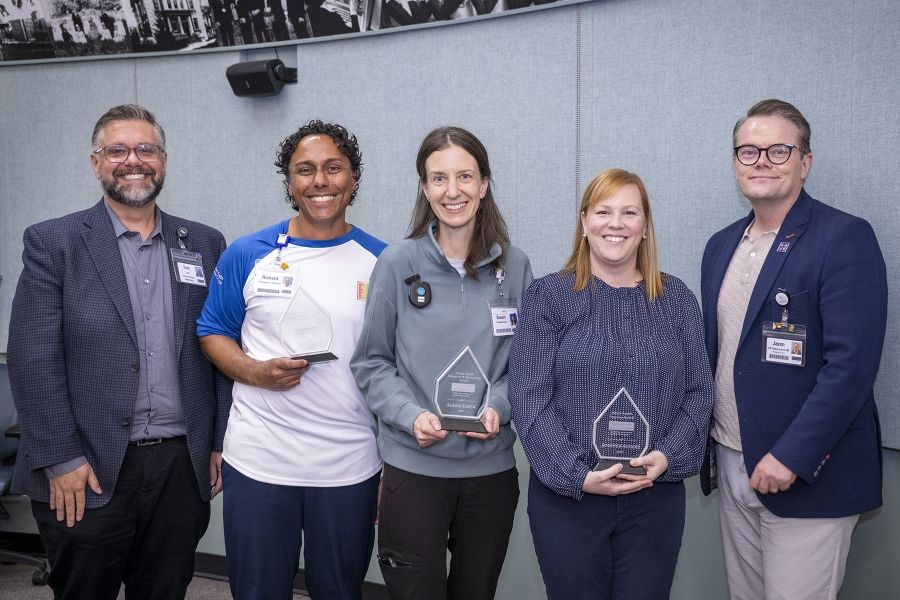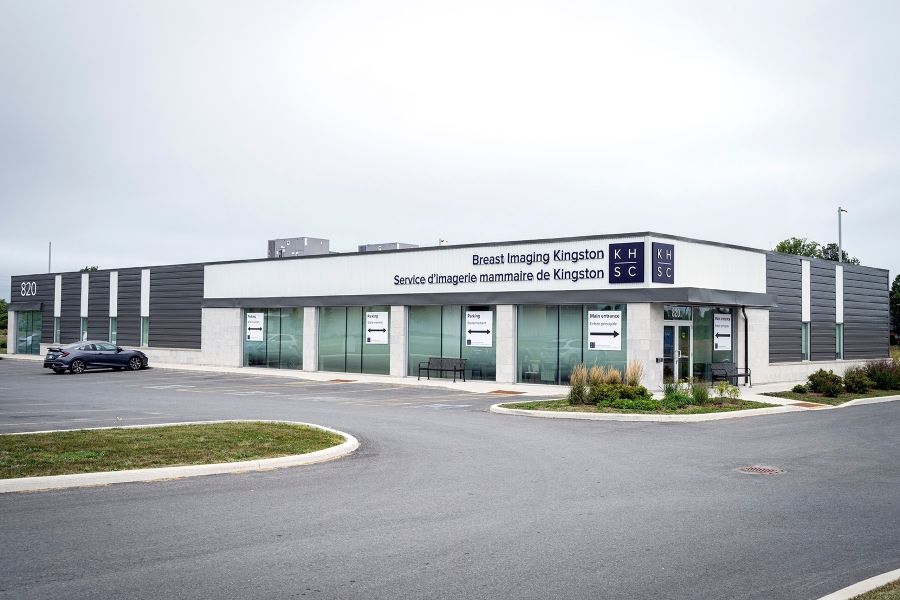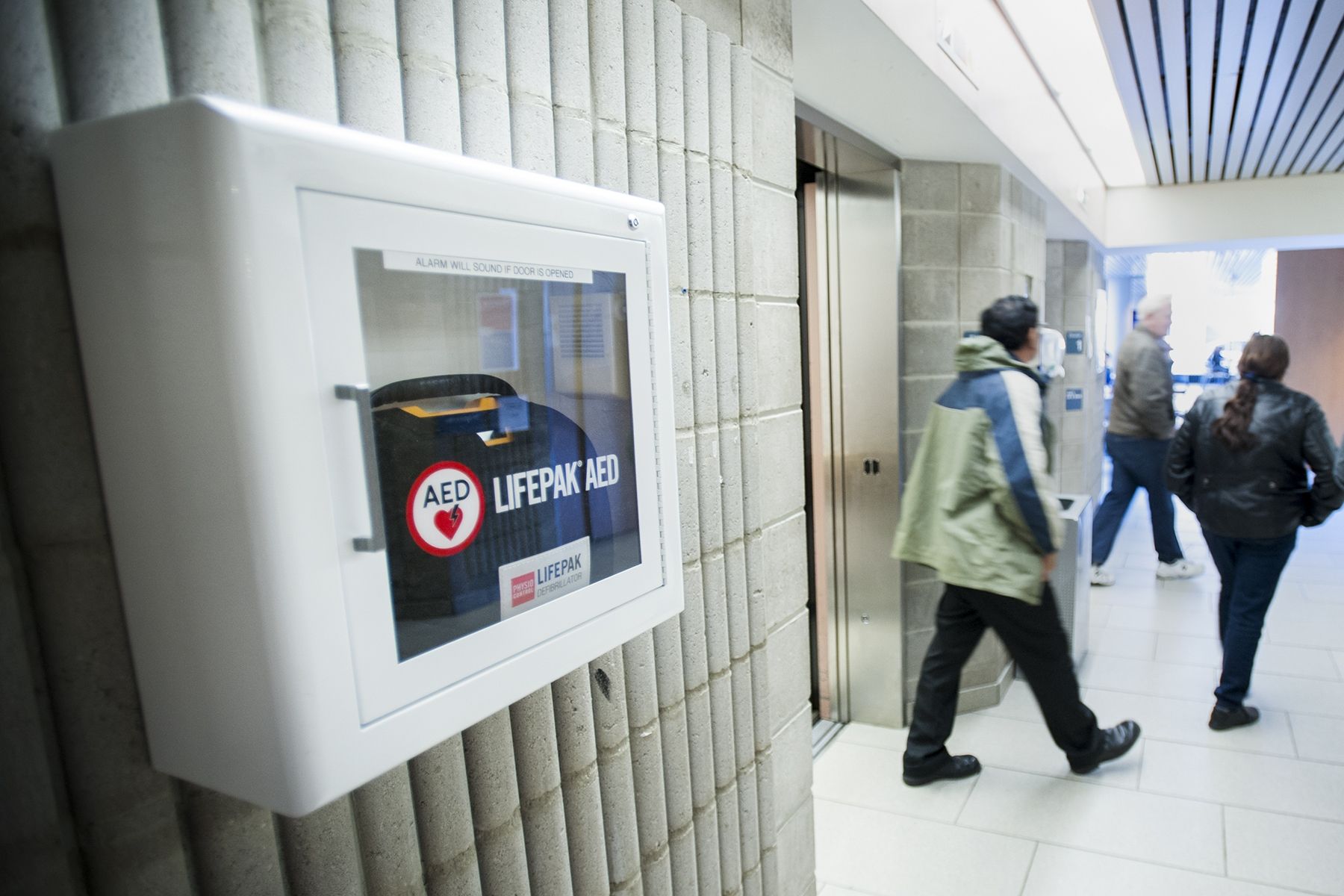
Airports have them. Shopping malls and schools have them. Even golf courses and casinos have them handy. Now Kingston General Hospital has stepped up and installed four Automated External Defibrillators in some of our busiest spaces.
"AEDs are specially designed so that people with no training can use them to potentially save the life of someone having a sudden cardiac arrest," says Julie Caffin, Program Operational Director for Cardiac and Emergency. "We placed them near some of our entrances and elevators so they can be quickly seen and accessed."
Each AED is encased in a small white box hanging on the wall. You can look for them next to the Kidd elevators on both Kidd 1 and Kidd 0, on the wall in the Watkins lobby and in the hallway next to the GIDRU entrance on Victory 1.
Here's how an AED can come to the rescue. Cardiac arrests are triggered by an electrical malfunction in the heart that causes an irregular heartbeat that can quickly be fatal. AEDs can fix the problem by delivering a jolt of electricity that can restore the heart to a normal rhythm.
Each AED is powered by a battery pack and it uses voice prompts to tell the user what to do. Its first instruction will always be to call for emergency medical help by using the nearest KGH phone to dial our emergency extension 4444, or by dialing 911 on a cellphone.
Once emergency help is on the way, the machine will next tell the user where to put the pads on the person's chest. It will then read the person's heart rhythm and if they are indeed having a cardiac arrest, it will tell the user exactly when to push the button to deliver an electric shock. It will also instruct everyone to step back from the person when the button is pushed.
After the shock is delivered, it will prompt the user to begin performing cardiopulmonary resuscitation (CPR), if they know how, until emergency medical help arrives or the person begins to move.
According to the Heart and Stroke Foundation of Canada, when an AED and CPR are immediately available the chance of survival from a cardiac arrest is substantially improved by up to 75 per cent, or more.
"Cardiac arrests can happen any time, anywhere and they can happen to patients, visiting members of the public, or to staff," says Dr. Dan Howes, Emergency Medicine physician. "These AEDs are another example of KGH making important investments to increase safety and each is well placed to potentially save someone's life."
Gallery
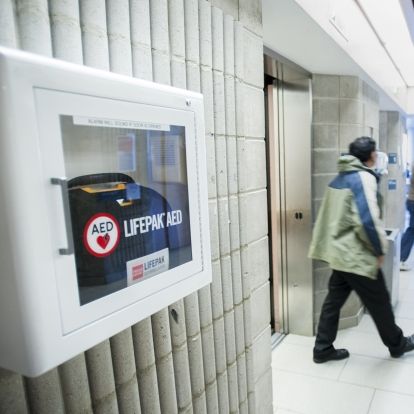
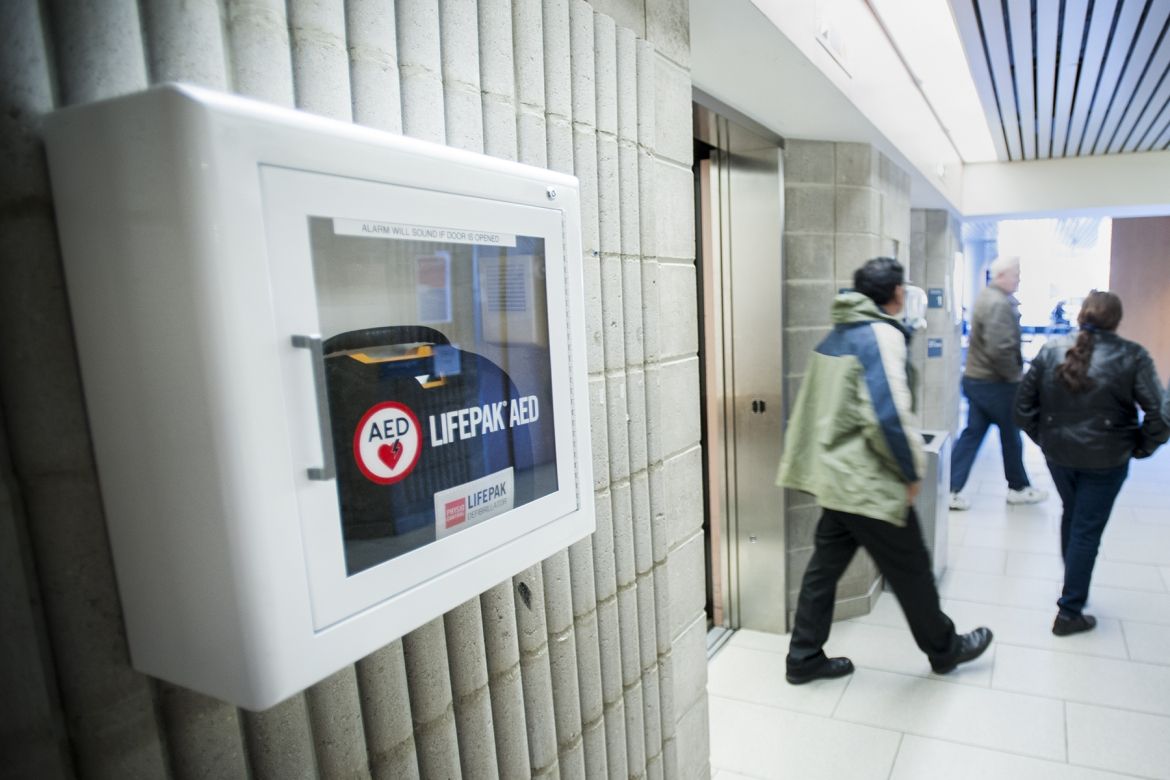
This AED near the Kidd elevators in our main lobby is one of four installed around KGH


